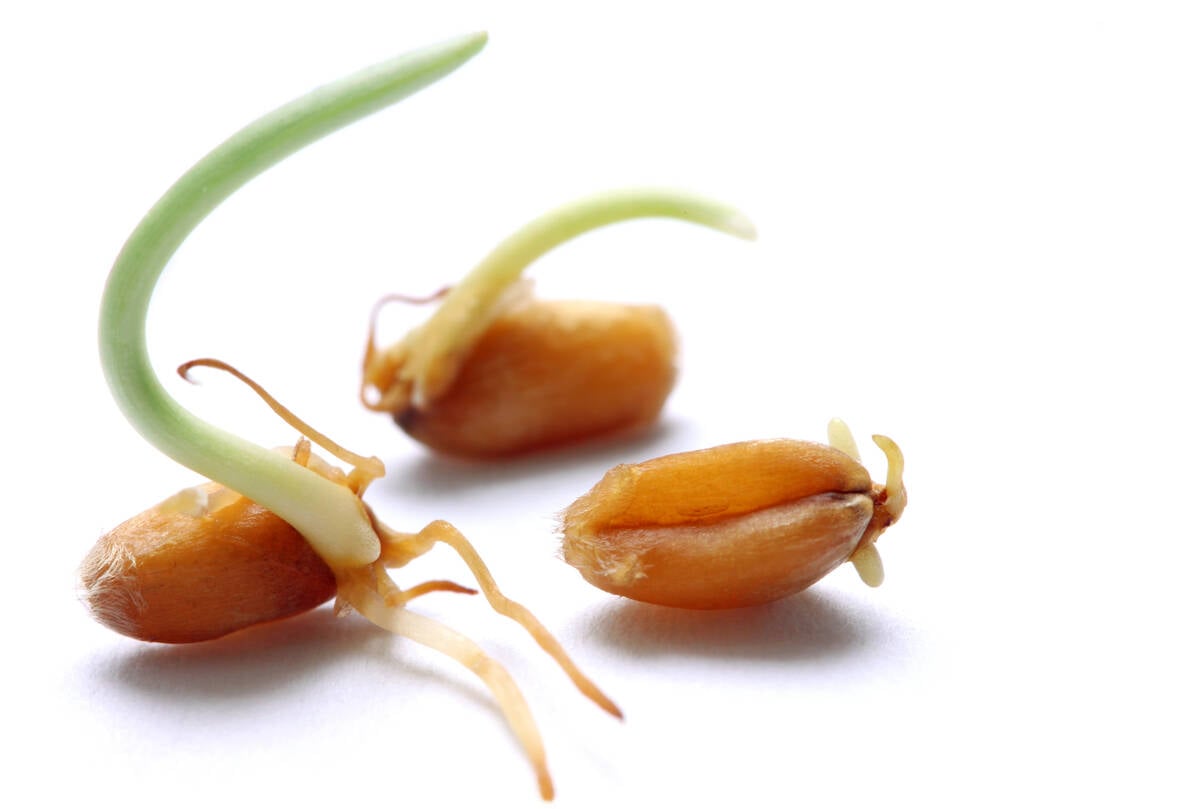Prairie farmers are seeding ahead of schedule, taking advantage of an exceptionally warm, dry spring.
“This is one of the earliest we’ve ever been on the land,” said Lacombe, Alta., agrologist Neil Miller.
Farmers from the Peace River country in the northwest to the southeastern corner of Manitoba are busy seeding.
In southern Alberta and southwestern Saskatchewan, some areas have more than 25 percent of their land seeded, with the rest of the south coming along fast.
Most regions have just begun but are well advanced on spring work.
Read Also

Manitoba farmers fight sprouted wheat after rain
Rain in mid-September has led to wheat sprouting problems in some Manitoba farm fields.
While the heat and dryness have let them get on the land, some farmers are worried by low soil moisture.
“We need a rain,” said Harvey Jackson, manager of the Manitoba Pool grain elevator in Brandon.
Southern Manitoba and southeastern Saskatchewan received a heavy snowfall at the end of the winter and southern Manitoba has since had some rainfall, but in central and northern areas soil moisture is low and dropping.
Strong winds have scoured even more moisture away, Jackson said.
The more eager farmers in that area are seeding but others are waiting for rain.
More moisture needed
In southwestern Saskatchewan federal agriculture officials report many farmers have decided not to plant crops on stubble because of dryness. Eastern Alberta is also dry and a worry to farmers, agrologists say.
A good dump of rain on the weekend jump-started stalled seeding in many dry areas of western Saskatchewan, said Saskatchewan government analyst Terry Karwandy. But eastern areas did not receive the same rain.
Farmers in the Lethbridge area had the opposite problem.
“This year we could have got in earlier but it was too wet,” said Geoff Ludkin, manager of the Alberta Wheat Pool elevator in Magrath.
Producers in his area are optimistic because they have almost one metre of soil moisture. In early March there was almost none but a snowstorm, and rains that followed, worked magic.
“It makes you feel a lot better,” Ludkin said.
Farmers in Peace River country are also savoring a rare bit of good fortune, as the low runoff conditions have allowed many to get on the land early to combine the remnants of last year’s crop. Others are finishing field work and starting to seed.
Alberta Agriculture reports that Peace farmers are five to 10 days ahead of usual seeding dates. They also have good soil moisture conditions.
Because of the warm winter, many cattle producers have good supplies of hay. This is fortunate, agrologists say, because in dry areas sloughs are low and pastures need rain before they are grazed.
“The real problem is the grass,” said Karwandy. “It’s trying to grow valiantly right now, and it needs moisture.”
She said rain will help most Saskatchewan farmers. Grain growers wouldn’t be bothered by a rain delay because they need the moisture, and cattle producers are getting anxious about pastures.















